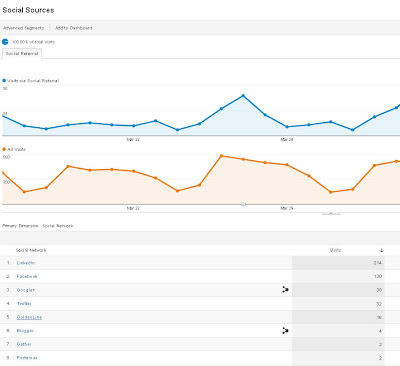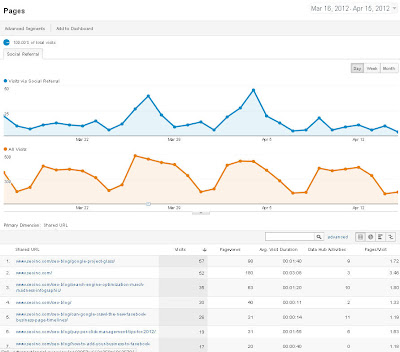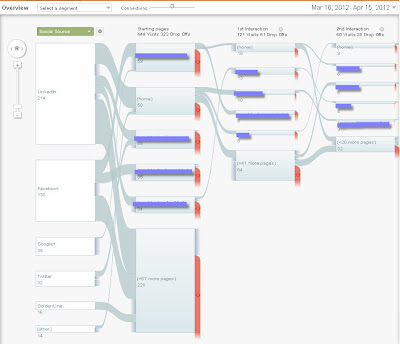Which tools to be used to improve link popularity, quality of backlinks and rankings in Google? What keywords to be used? We give answers. Mentioned is the list of very useful
SEO tools, which if used, will definitely help you in developing and optimizing your web site. For resources, we recommend the following very useful SEO Tools; one of the most comprehensive list of
SEO tools.
Alexa & Backlink
Alexa Ranking:
This tool allows you to create traffic history for your site. It works out traffic rankings by analyzing the usage of millions of Alexa toolbar users.
Backlink Anchor Text Analyzer:
It will help you determine the anchor text used by your backlinks to link to your site and the backlinks.
Backlink Analyzer:
This tool researches and analyzes websites for the quality of link. It checks for DMOZ listing, Domain Age & Expiration, Indexed Pages, EDU & .GOV Links, Google PageRank, Links to Website, Alexa Traffic Rank.
Backlink Builder:
Quality backlinks are of utmost importance for site optimization, this tool helps you do that.
Domain Popularity, Domain Stats Tools
Domain Age Tool:
This tool allows you to check how the site looked when it started, and also displays the approximate age of the site.
Domain Dossier:
Domain Dossier is an exemplary tool, investigates the IP addresses and the domains, as the name says.
Domain Popularity:
This tool can show up to ten subpages/backlinking domains, Google PageRank and host IP. It also displays all the backlinks for the given domain.
Domain Stats: A Tool Presenting Required Stats:
It helps you attain all the stats you need to know about competitor’s domain. Stats include: Age of the domains, Yahoo WebRank, Alexa Taffic Rank, Dmoz listings, number of backlinks and pages indexed in Search Engines.
HTTP / HTTPS Header Check:
This tool inspects the HTTP headers that the web server returns when a URL is requested. It works with both HTTPS URLs and HTTP.
View HTTP Headers & HTTP Path:
HTTP Headers allows you to view the HTTP headers for a HTTP request, whereas View HTTP Path tool lets you view the path, a request takes to get fulfilled.
Check Google PageRank:
This tool allows you to check the PageRank of any site you want without having to install the Google toolbar.
Check PageRank by Google Data Center:
This useful tool allows the user to check the PageRank of the site from many different data centers.
Adsense Keywords & YPN Keywords Search Tool:
Lotaweb allows Optimizers to focus on the right keywords and phrases for their content, to monetize their site, with the ability to search thousands of highly effective Adsense keywords.
Google Adwords Keyword Tool:
This Keyword tool from Google provides Specific and alternate keywords, best suited for your site. They will still have to be analyzed to determine their worth.
Google Banned Tool:
It’s a way to check if your site has been banned by Google for some reason. It has two ways to check in the Google database.
Google Keyword Ranking Tool:
It checks the search engine position ranking for keywords in the major search engines and helps you generate an advanced report.
Page Rank Tool:
PageRank tool shows the Google PageRank values for the URL submitted from various Google datacenters.
Google Page Rank Checker:
Google PageRank checker is a very simple tool that is used to check your PageRank so it can be displayed on your website.
Page Rank Authenticity Check:
This tool allows the PageRank to be checked for authenticity and also shows the PageRank of the given domain.
Visual Page Rank:
The Visual PageRank – tool shows all links and there corresponding PageRanks visually rather than in text.
Keyword Density, Keyword Suggestion Tool, Keyword Analysis Tool
Keyword Density:
It helps the SEOs and webmasters achieve their goal of optimum keywords density for a set of different keywords.
Keyword Difficulty Tool:
This tool is used to analyze the competitiveness of a keyword or a phrase. It gives a detailed analysis of the top ranked sites and the percentage score at Yahoo and Google.
Keyword Density Checker:
It shows the percentage of number of times a particular keyword has been used in the content. It crawls the URL, removes common stop words and analyzes the density.
Keyword Suggestion Tool:
It shows the popularity of key phrases and also gives ideas with alternate key phrases. It helps with selecting the right key phrase for the website.
Website Keyword Suggestions:
Website Keywords Suggestion tool provides keyword suggestions and traffic estimates, by determining the theme of the web site.
Ontology Finder:
The Ontology Finder tool checks the top one thousand Google results for the keywords by running a related query.
Link Value, Link Popularity Check, Site Link Analyzer
Deep Link Ratio Tool:
This tool can be used to compare the DLRs for the best ranking sites for the search term. It also analyzes if the ranking in search engines is affected by the deep link ratio of the site.
Link Validation Spider:
Link Validation Spider Tool is not only free but a very useful online tool mainly used to check for the broken links.
Link Value:
This very effective and free tool is used to calculate the value of the link per month of the submitted web site.
Link Price Calculator:
This tool helps you determine the approx. amount that you should be paying/month for a text link (ad) from all the pages of the specified website.
Reciprocal Link Check:
This tool determines whether your link partners have used the anchor text to link to your site.
Site Link Analyzer:
This tool analyzes the given URL and returns data containing columns of their associated text and outbound links.
Outbound Links:
The Outbound link tool displays every outgoing link from the given URL; separated in internal and external links.
Meta Tag Generators
Meta Tag Generator:
Meta tag generator only picks the most searched words from the content after crawling it. It also generates meta keywords tags using the same words. It is also used to generate meta head tag.
Title & Meta Tags Generator:
This tool generates the title and meta tags for the page and helps improves rankings using the meta tag generator.
Miscellaneous Tools
Copyscape:
This useful tool searches for copies of your web page on the Web.
Site Analysis Including Link Popularity:
This tool is used to generate complete site analysis e.g. Google PageRank, backlinks, indexed sites and also the domain if it’s in DMOZ and Yahoo directory.
Similar Page Checker:
Search engine penalize sites with duplicate content. The content used on your site could be similar to another site on the net or could even be similar to the content of your own site. The tool shows amount of similarity between the two pages and sites.
Sitemap Generator:
This tool generates Google sitemap online, which is of huge importance when it comes to improving the rankings of your site.
Robots.txt Syntax Checker:
This robots.txt syntax tool checker checks the contents of a site’s robots.txt.
Speedtester:
This tool shows how long a site takes to load and then decides if the IP needs to be changed or the site needs to be optimized more.
URL Rewrite (mod_rewrite):
This tool helps you change the dynamic URLs to URLs that are search engine friendly.
Mod_rewrite Rewrite Rule Generator:
This tool generator takes a dynamic URL, and generate the correct syntax to put it in .htaccess file to allow the URL to be written in a format which a spider can crawl.
Cloaking Detection Tool:
Cloaked content is detected by the Googlebot (based on User-Agent) stimulated by this tool.
What is Hosted on that IP:
This tool displays the virtual hosts on a particular IP (Internet Protocol).
Search Engine Spider Simulator:
This tool shows the information received from the website by a search engine spider.
Search Engine Position Checker:
This tool automatically queries the search engines specified and check if the URL is in the top 50 results of the targeted keywords.
Marketleap Search Engine Verification Tool:
This tool checks if the site is in the top 3 pages of a search engine for the targeted keyword.
Number of Pages Indexed:
This tool generates the report showing how many pages of the site have been indexed by the search engines. It supports all the top search engines: Google, MSN, Hotbot, Yahoo, Alltheweb and AltaVista.
SERPs Position:
This tool displays the position of your domain in the rankings for the targeted keywords and compares it with the first 100 results by Google, Yahoo, and MSN.



.jpg)








































